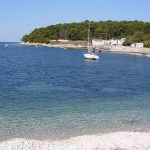We all love to hate cash and credit card payments, as well as the ENC system currently used to pay the fees when using Croatian highways. Now Krešimir Žabec writes for Jutarnji list about the selected replacement systems, which will be presented to the public this week – and introduced on the roads in 2022.
The two systems replacing the current setup will be the Dedicated Short-Range Communications system (DSRC) and Automatic License Plate Reader (ALPR). The system was proposed to the Ministry of Traffic by the Spanish consulting firm IDOM, after they’ve performed an analysis of the situation.
The drivers of motorcycles and personal vehicles will get to choose whether they want to have a transponder in their vehicle, which will use wireless techonolgy to register when a car has entered and left the highway, or if they want to be registered using the automatic license-plate readers. Other types of vehicles will only be able to use the DSRC system.
One of the demands before accepting any new system was that it can’t cost more than what the tolls cost now. Some savings will come from the fact that the new system will allow for the correct calculations of prices, unlike today when the tolls are rounded to the nearest kuna. The ministry claims that the new systems will improve the traffic flow and reduce congestion, as well as eliminate any financial fraud, as there will be no cash involved and no tellers to handle it.
The systems that will read the transponders will be installed on entrances and exits, and they’re basically just a more advanced version of the ENC device, that can read the signal from the transponder at much higher speeds. The other system, ALPR will support the first one, because of the seasonality of the traffic on Croatian highways.
One of its main features is that foreign drivers entering Croatia won’t need to buy the transponders, and the ALPR will automatically check if you’ve paid the toll (it is still somewhat confusing as to how the payment itself will be done, especially for foreign drivers, but we’ll find out the details in due time). Many other countries use the two systems on their highways, such as Portugal and the Netherlands.
Read more about travel and driving in Croatia in our Travel section.









